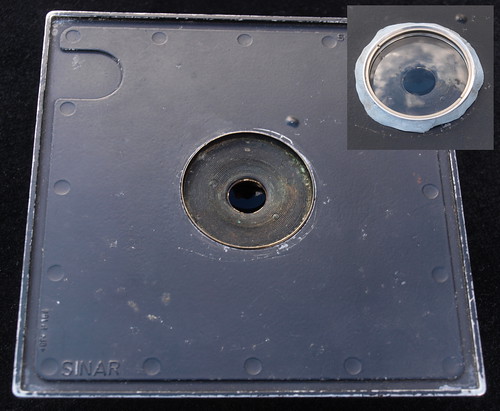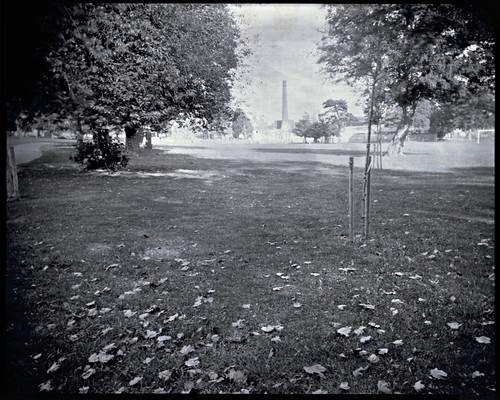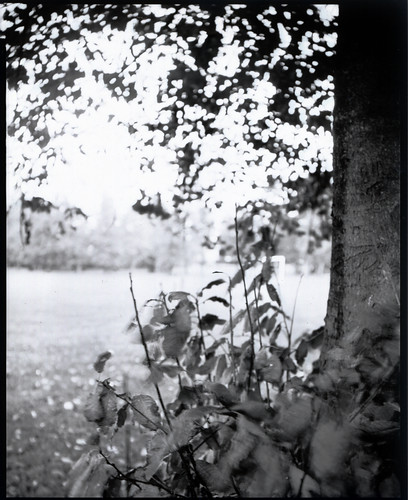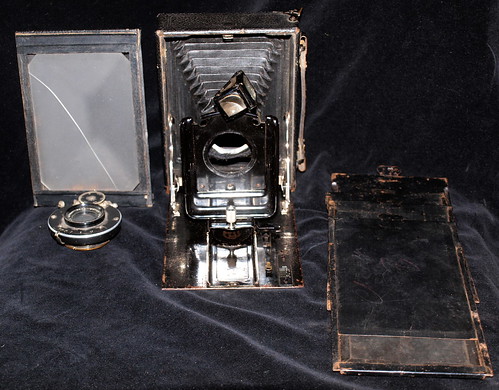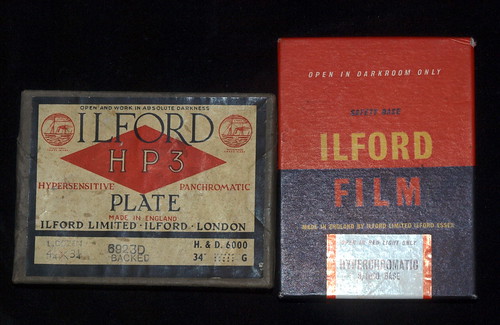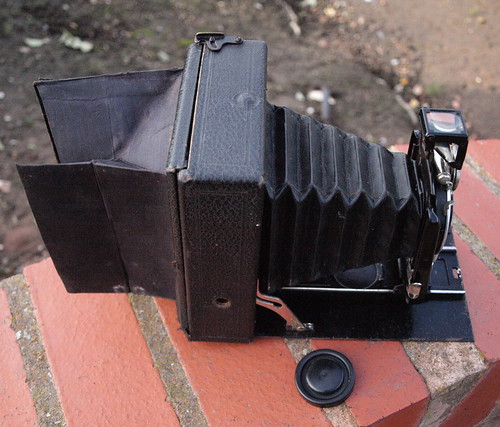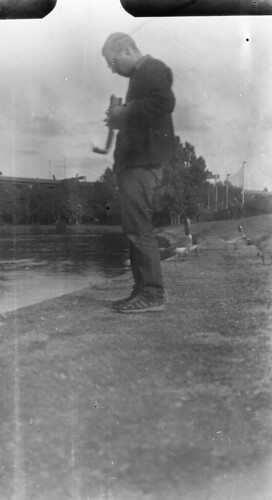I'm posting slightly early because I want to keep my target of one post per week for a bit, and I will be away at the weekend.
Photograms
Photograms are photographs without a camera. They are one of the earliest forms of photographic pictures, very easy to do, and never seem to be out of fashion.
The idea is that you place an object on photographic material (usually photographic paper) in the dark. You flash the paper briefly with some controlled exposure of light, and then develop normally. The result is white where the shadows of the object were and black everywhere else. Images of pressed flowers and plants work well.
I tried this using very old glass plates, dating to the 1950s I think. I made a 3.25x3.25 inch photogram of a fern on a plate and projected it using my epidiascope. (I used PQ Universal at a dilution of 1+9 for about 4 minutes as the developer. As the old plate was a bit fogged I used some ferri solution to clear the highlights.)
I have not made nor got a screen for the projector yet, so to try it out I projected onto a small square canvas. I photographed it all at dusk.

It was somehow nice to bring the fern back to the garden!
Layers
This is hardly "art" but for me it shows some of the essential ideas that I want to explore more: multistage processes with all stages contributing in "layers". All too often a photograph is a one stage click, from a single viewpoint with a single automatic or semi-automatic post-process (whether film or digital). But here we have,
- The manufacture of the old plate itself, and its decay over time (giving, particularly, larger grain and uncontrolled white spots).
- The pressed fern as raw material
- The process of making the photogram, which was itself a controlled two-stage process with develop then bleach
- The projection of the photogram using the old projector and old light bulb, with its own colour and quality
- The texture of the canvas onto which it was projected
- The location of the projection (outside, in the garden)
- And finally, though it is certainly the weakest point in the whole process in the example above, the photographing of the projection and surroundings.
I find that each of these stages adds something almost intangible, but they all add up, and experimentation with ways of repeating these cycles might build up images with a quality quite special. Anyway, I want to try.


